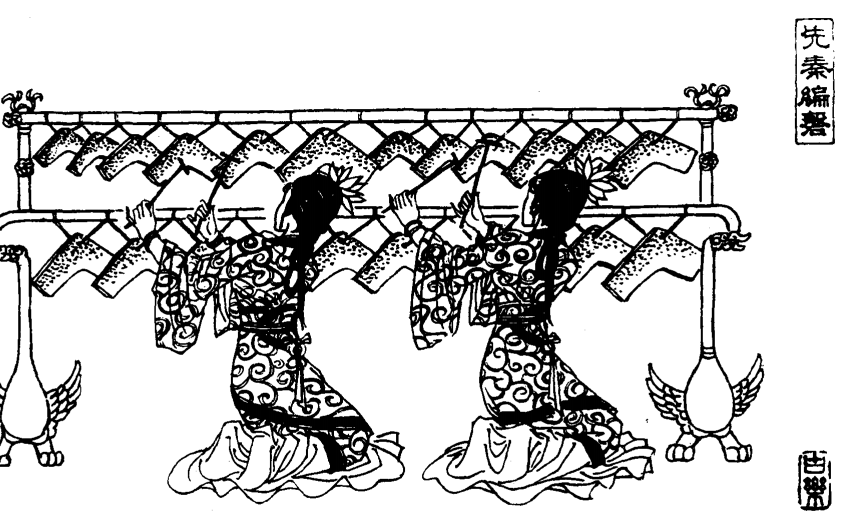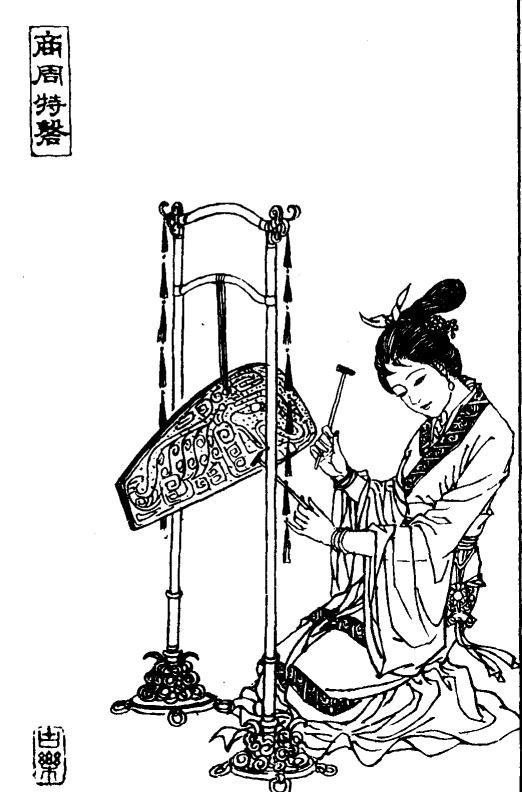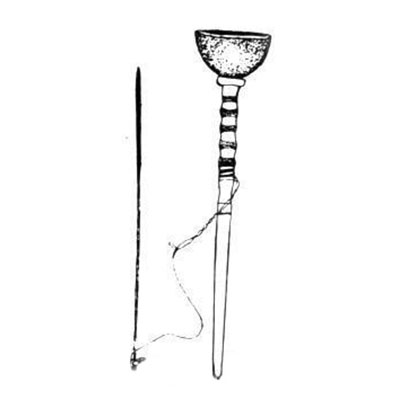The classification and historical evolution of chimes
448 views · Organized by chen on 2022-02-15
A chime is a stone percussion instrument that may have evolved from some kind of flaky stone labor tool. The chime was called "stone" and "singing ball" in ancient times. A stone chime was found at the Dongxia Fengxia cultural site in Xia County, Shanxi Province. , The overall hit is very rough, and some edges and corners are sharp, and it can still make a crisp sound when struck.
There are many kinds of chimes in the Shang Dynasty, such as stone, jade and bronze. They are divided into two types. One is a single large chime. The tiger-shaped large stone chime unearthed in the Yin Tomb in Wuguan Village, Anyang, Henan Province, is made of marble. With a history of more than 3,000 years, the timbre is as clear as the sound of a bronze musical instrument.
As early as more than 3,000 years ago, people used chime stones to make "braided chimes". The braided chimes of the Shang Dynasty generally consisted of three pieces, and a set of five pieces of braided chimes were unearthed in the western area of Yin Ruins. In the early Warring States period more than 2000 years ago, the craftsmanship of chime making in Chu reached a high level.
In 2009, the "Sixty Jiazi Chinese chimes" were built by the stone god Master Rentao as a gift for the 60th anniversary of the motherland.
In the Qing Dynasty, special chimes and weaving chimes were widely used in court music. The special chime is a musical instrument played by the emperor when offering sacrifices to heaven and earth, ancestors and Confucius. In the 12 months of the year, each month will play a piece of music in one key, such as Taizu for the first month, ... Huangzhong for November, Dalu for December, etc., so the special chime has different pitches. 12 pieces, all individually hung on a wooden chime frame. They vary in size, the largest is "Yellow Bell" and the smallest is "Ying Bell". When playing, you only need to change the special chime of the corresponding key. When playing in ensemble, strike the special chime at the end of each phrase. Strengthen the role of rhythm.
Cloud chime: also known as "induction chime". Ancient percussion instrument. The shape is the same as that of the bowl-shaped sitting chime. The shape is very small, the body of the chime is made of copper, and it is shaped like a wine cup. The diameter of the chime is only 7 cm, and it is placed on the top of a long wooden handle, with a total length of about 35 cm. The wooden handle is decorated with stripes.
Cloud chimes are instruments used in monasteries and are also used in religious music. When playing, the left hand holds the lower end of the wooden handle. Percussion with a slender copper stick in the right hand, the pronunciation is crisp, and it is often used to percussion rhythm in Sanskrit music.
There are many kinds of chimes in the Shang Dynasty, such as stone, jade and bronze. They are divided into two types. One is a single large chime. The tiger-shaped large stone chime unearthed in the Yin Tomb in Wuguan Village, Anyang, Henan Province, is made of marble. With a history of more than 3,000 years, the timbre is as clear as the sound of a bronze musical instrument.
chime
A chime is a percussion instrument that can play melody: several chimes that only emit different timbres are arranged into a group, which can produce several tones with different timbres.As early as more than 3,000 years ago, people used chime stones to make "braided chimes". The braided chimes of the Shang Dynasty generally consisted of three pieces, and a set of five pieces of braided chimes were unearthed in the western area of Yin Ruins. In the early Warring States period more than 2000 years ago, the craftsmanship of chime making in Chu reached a high level.
In 2009, the "Sixty Jiazi Chinese chimes" were built by the stone god Master Rentao as a gift for the 60th anniversary of the motherland.

special chime
The special chime is a musical instrument played by the emperor when offering sacrifices to heaven and earth, ancestors and Confucius.In the Qing Dynasty, special chimes and weaving chimes were widely used in court music. The special chime is a musical instrument played by the emperor when offering sacrifices to heaven and earth, ancestors and Confucius. In the 12 months of the year, each month will play a piece of music in one key, such as Taizu for the first month, ... Huangzhong for November, Dalu for December, etc., so the special chime has different pitches. 12 pieces, all individually hung on a wooden chime frame. They vary in size, the largest is "Yellow Bell" and the smallest is "Ying Bell". When playing, you only need to change the special chime of the corresponding key. When playing in ensemble, strike the special chime at the end of each phrase. Strengthen the role of rhythm.

cloud chime
Cloud chimes are instruments used in monasteries and are often used in religious music.Cloud chime: also known as "induction chime". Ancient percussion instrument. The shape is the same as that of the bowl-shaped sitting chime. The shape is very small, the body of the chime is made of copper, and it is shaped like a wine cup. The diameter of the chime is only 7 cm, and it is placed on the top of a long wooden handle, with a total length of about 35 cm. The wooden handle is decorated with stripes.
Cloud chimes are instruments used in monasteries and are also used in religious music. When playing, the left hand holds the lower end of the wooden handle. Percussion with a slender copper stick in the right hand, the pronunciation is crisp, and it is often used to percussion rhythm in Sanskrit music.

Involving musical instruments
Qing (pinyin: qìng) is an ancient Chinese Han stone percussion instrument and ritual vessel. The chime originated from a kind of flaky stone labor tool, and its shape has changed in many ways, and the texture has also changed from the original stone to jade and copper chimes. Play the body music instrument.
Bianqing (pinyin: biān qìng) is one of the ancient percussion instruments of the Han nationality, mostly used in court music or grand ceremonies. A set of stone or jade chimes with different pitches are hung on the wooden frame, and the music is played with a small mallet.
Special chime (pinyin: tè qìng), special hanging chime, made of jade or stone. The ones unearthed from the Yin Ruins are semi-circular and slightly zigzag, and later more zigzag.
Yunqing (pinyin: Yún qìng) is often used in religious music and is a dharma instrument used by monasteries. Also known as "Induction Chime". A percussion instrument.
Guess you like
Organized by 九曲 on 2022-02-28
Chinese music is an important part of the splendid Chinese culture. Before the middle of the 19th century, it experienced three periods: ancient, medieval and modern. For thousands of years, it is famous for its colorful varieties and rich systems.
read >>
Organized by 钟离 on 2022-02-21
The chime has a long history. According to the pre-Qin document "Shangshu·Yiji", it is recorded that "hitting the ball", "hitting the stone". These "singing balls" and "ba shi" are the names of chimes in ancient times. The name of the chime is found in the "Shiben Zuo Pian", and it is said that it was made by Wuju in the time of Yao and Shun. Or biography: "Qing, made by uncle." It can be seen that in the late Neolithic period, it was equivalent to when Yao or Shun were the chiefs of the tribal alliance, and the chime was already in use.
read >>
Hot news
- 01 The Simple Difference Between Guqin, Se, and Guzheng
- 02 The difference between the five-stringed lute and the four-stringed lute
- 03 The difference between cymbals and cymbals in ethnic musical instruments
- 04 Dulcimer exam and performance repertoire
- 05 The handsome guy in 1997 is so advanced in pulling erhu! Netizen: Come and "wash your ears"
 渝公网安备 50010702504639号
渝公网安备 50010702504639号